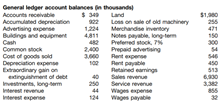dolution
dolution.
Revenues result from the sale of goods and services to customers and increase cash and/or accounts receivable.
(a). Revenues should be recognized when all of the following events have occurred:
(1) The seller has completed most activities necessary to produce and sell its products.
(2) The seller has incurred the costs necessary to produce and sell its products or can reasonably estimate those costs.
(3) The seller can measure objectively the amount of revenue it has earned.
(4) The seller is reasonably sure of collecting cash from the buyer.
(b). Revenues from long-term contracts are recognized each fiscal period in proportion to the passage of time or the amount of work covered by the contract that has been completed.
(c). Sales discounts and returns are deducted from gross revenues in computing the amount of net revenue reported on the income statement.
(d). Uncollectible accounts expense is estimated each fiscal year to match the cost of expected doubtful accounts of customers with the revenues that resulted in the doubtful accounts.
(e). Warranty expenses are estimated each fiscal year to match these costs with revenues that resulted in the costs.
"Looking for a Similar Assignment? Get Expert Help at an Amazing Discount!"


